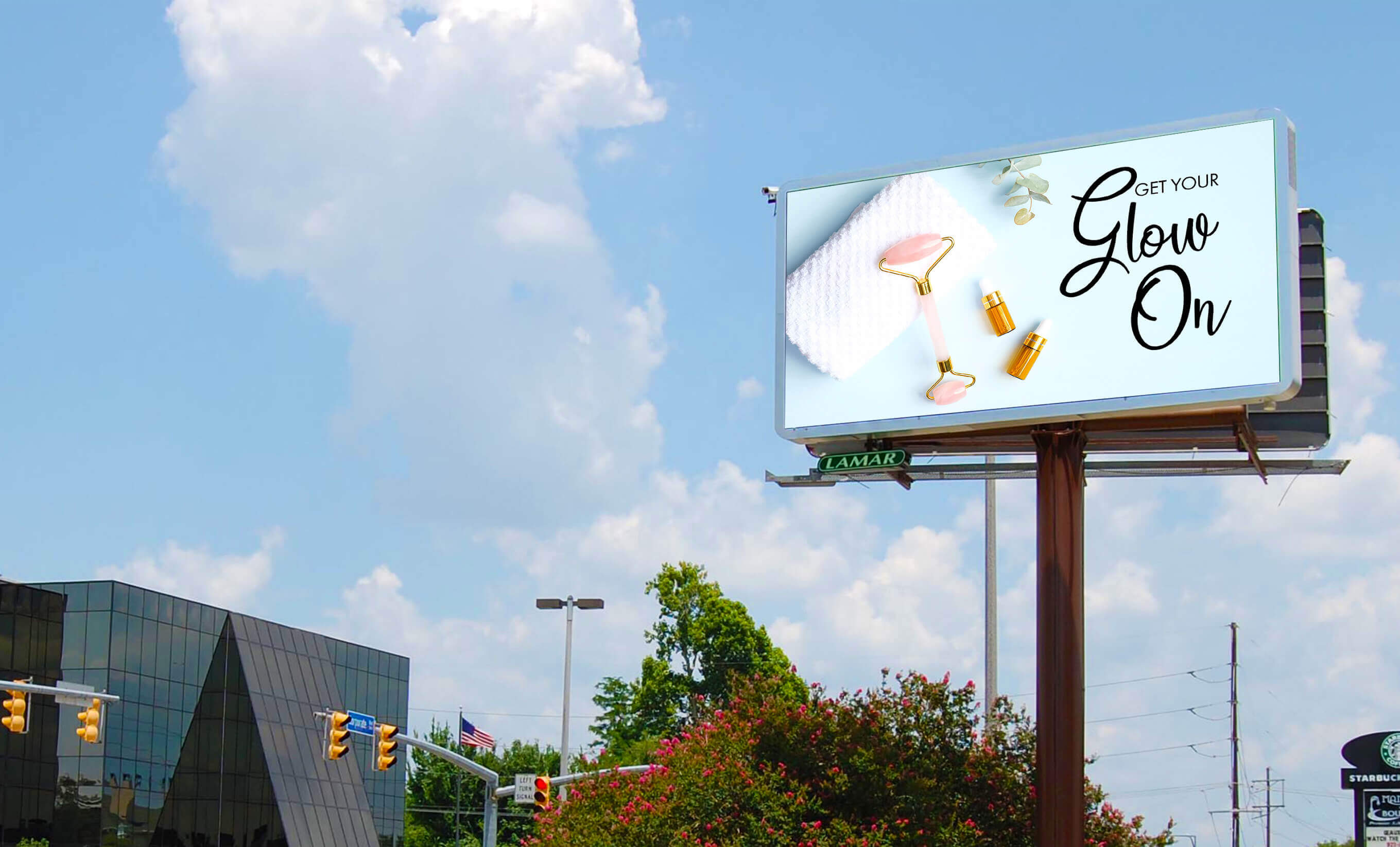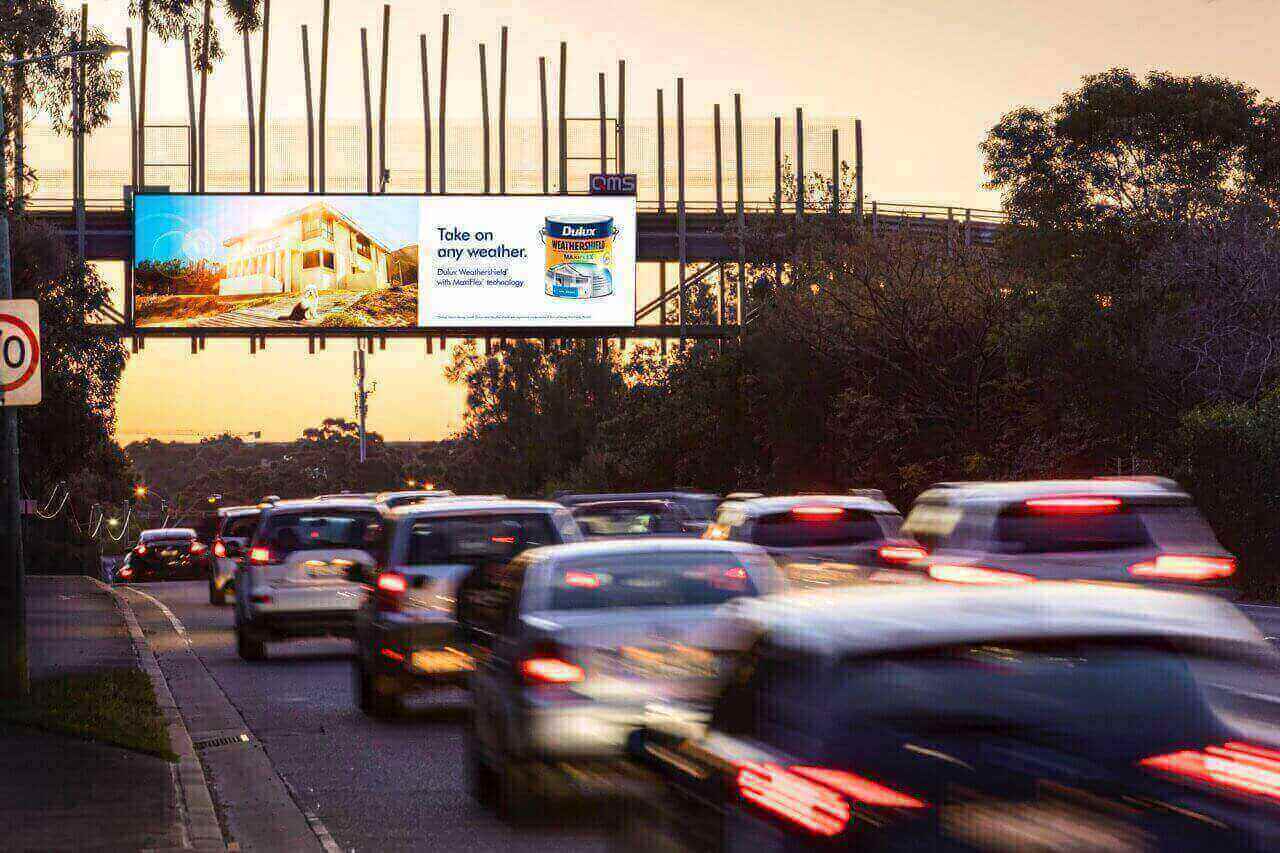
Digital out-of-home (DOOH) screens are everywhere — from traditional locations such as billboards and urban panels, to more niche venues such as gyms or doctors’ offices — the medium has a pervasive presence. In general, DOOH media falls into two categories: place-based media and large-format media. In this blog, we will go one step further to explain who operates the screens, where they can be found and what sets digital OOH media apart from other marketing channels.
What is the difference between DOOH and traditional OOH media?
The biggest difference between digital out-of-home and traditional out-of-home (OOH) media is the technology, which changes how audiences are engaged. Traditional OOH media, such as static billboards, posters and transit wraps, rely on printed visuals that are static. While effective for consistent brand messaging, they lack the dynamic interactivity offered by digital out-of-home media.
DOOH media, on the other hand, leverages digital screens to display dynamic, rotating advertisements that can be updated in real time. Marketers are able to create custom campaigns that can change based on the time of day, the weather or specific audience demographics. For instance, a coffee brand can display ads for hot beverages when it's cold outside and vice versa, maximizing impact without spending additional resources.
Interactivity is another way DOOH distinguishes itself from traditional OOH. DOOH screens integrate QR codes, touchscreens and even augmented reality (AR) experiences, inviting consumers to stop and engage rather than walk past an ad. Additionally, media buyers can track detailed performance metrics, such as impressions and engagement rates, which traditional OOH isn't set up to do.
Both DOOH and traditional OOH play are valuable marketing tools, but it's clear that DOOH offers a lot more versatility and functionality than traditional, analog methods.
Large format
Large format media includes the billboards, such as those you see in Times Square or along highways and urban panels, such as bus shelters and sidewalk displays. No matter the location, all large format screens are best viewed by either drivers, pedestrians or street-level traffic.
Major players in the large format space include Lamar Advertising, JCDecaux, Clear Channel Outdoor, Outfront, Pattison, Astral, Big Outdoor and QMS.

However, these major players are not the only billboard operators – the OOH ecosystem is also made up of many independent billboard operators, including IBOUSA, Adams Outdoor and more. The combined scale of these providers give buyers additional opportunities to reach their target audience along major highways, roadways and intersections in highly targeted areas.
Large format media is best for when a brand wants to make a big splash, casting a wide net to reach consumers while they’re on-the-go. These screens can help drive upper funnel metrics, such as brand and product awareness. Digital billboards and street furniture offer the ability to feature creatives that change every few seconds, with several advertisers sharing the same real estate.

Place-based media
While billboards are the DOOH advertising format with the most fame, the majority of DOOH actually exists as place-based media. Place-based media, which is a great way to build brand awareness, can be found in malls, gyms, office buildings, gas stations, restaurants, bars, taxis, universities and other locations where consumers regularly spend time.

These contextually relevant environments offer brands and marketers a distinct opportunity to engage with consumers in an everyday setting. Place-based media owners include Captivate, ZOOM Media, Vengo, TouchTunes, Rouge Media, GSTV, Topgolf, Cinema Scene, Lightbox OOH Video Network, Curb, Vertical Impression, Volta and many more.

Marketers choose place-based media to deliver tailored creative experiences, making the most of the consumer attention and dwell time these spaces provide. The unique nature of these screen locations enables marketers to both tap into the benefits of consumers being exposed to a campaign’s messaging as they go about their daily activities, as well as playing off of the contextual environments, matching the location to the content.
Point-of-purchase
Within place-based media, there are screens that are defined by their placement within a retail location or proximity to a cashier. Point-of-purchase digital signage exists in shopping destinations such as big box retailers, convenience stores, grocery stores, liquor stores and pharmacies.

Some media owners that operate point-of-purchase screens include ATM.tv, BevTV, NRS, Sellr, and GroceryTV. These engaging displays give marketers the opportunity to reach their audiences and influence purchasing decisions while they’re in-store, enabling shoppers to act on a well-placed ad.

These screens give marketers the opportunity to reach consumers and influence purchasing decisions while they’re in-store, enabling shoppers to act on a well-placed ad.
Unlock the potential of digital out-of-home advertising
Digital out-of-home advertising lets brands connect with consumers in exciting places — whether they're on city streets, working out at the gym or shopping at their favorite stores. Each type of DOOH media presents an opportunity to engage audiences in high-traffic and contextually relevant spaces. By strategically selecting the right mix of screen types, advertisers can enhance their brand presence, build awareness and drive conversions.
If you're ready to explore the possibilities of DOOH advertising, consider partnering with experts who can help you craft a strategy that fits your goals. Reach out for a strategy session or request a demo with the Vistar team.
%20(1).png)


